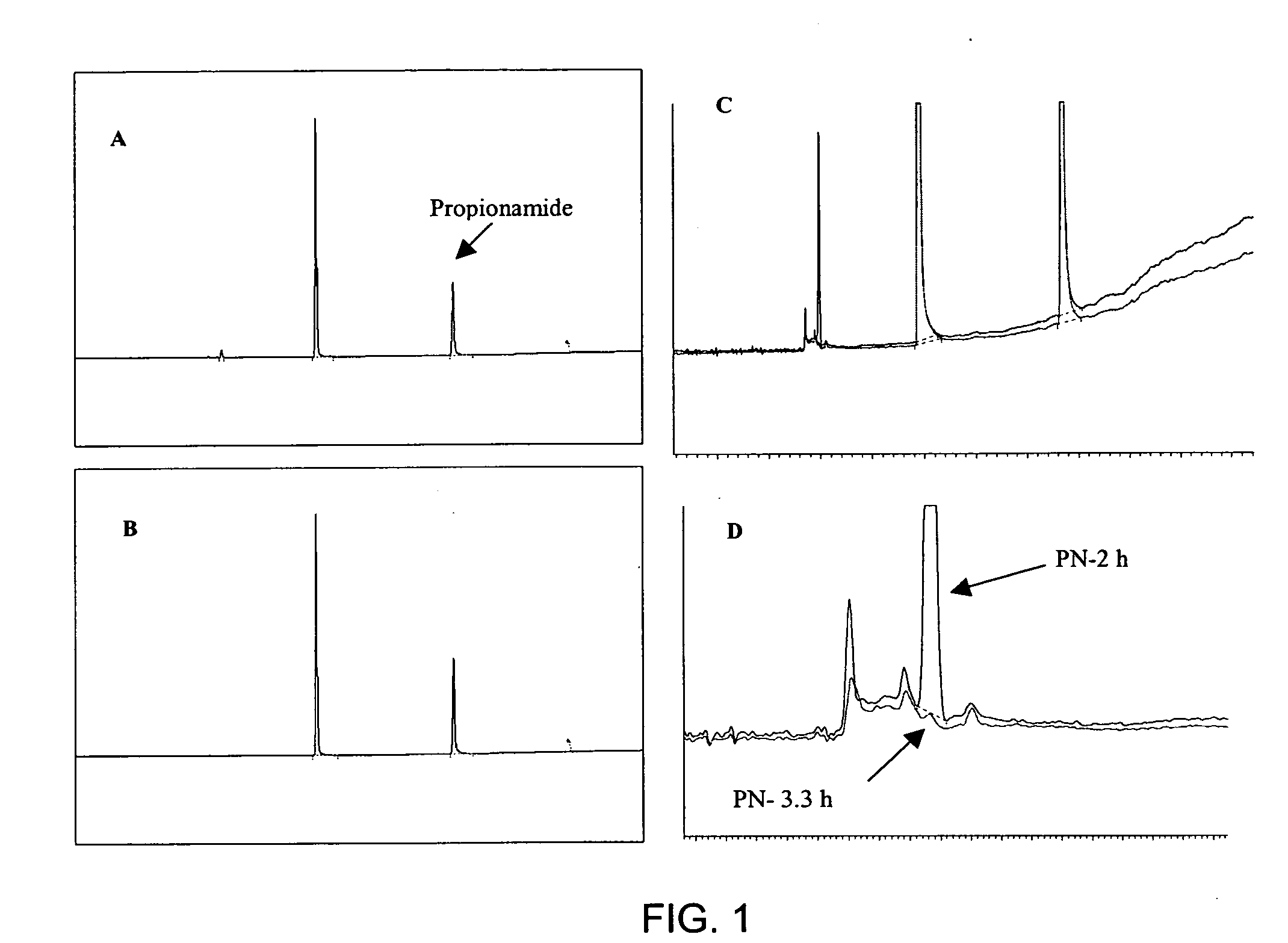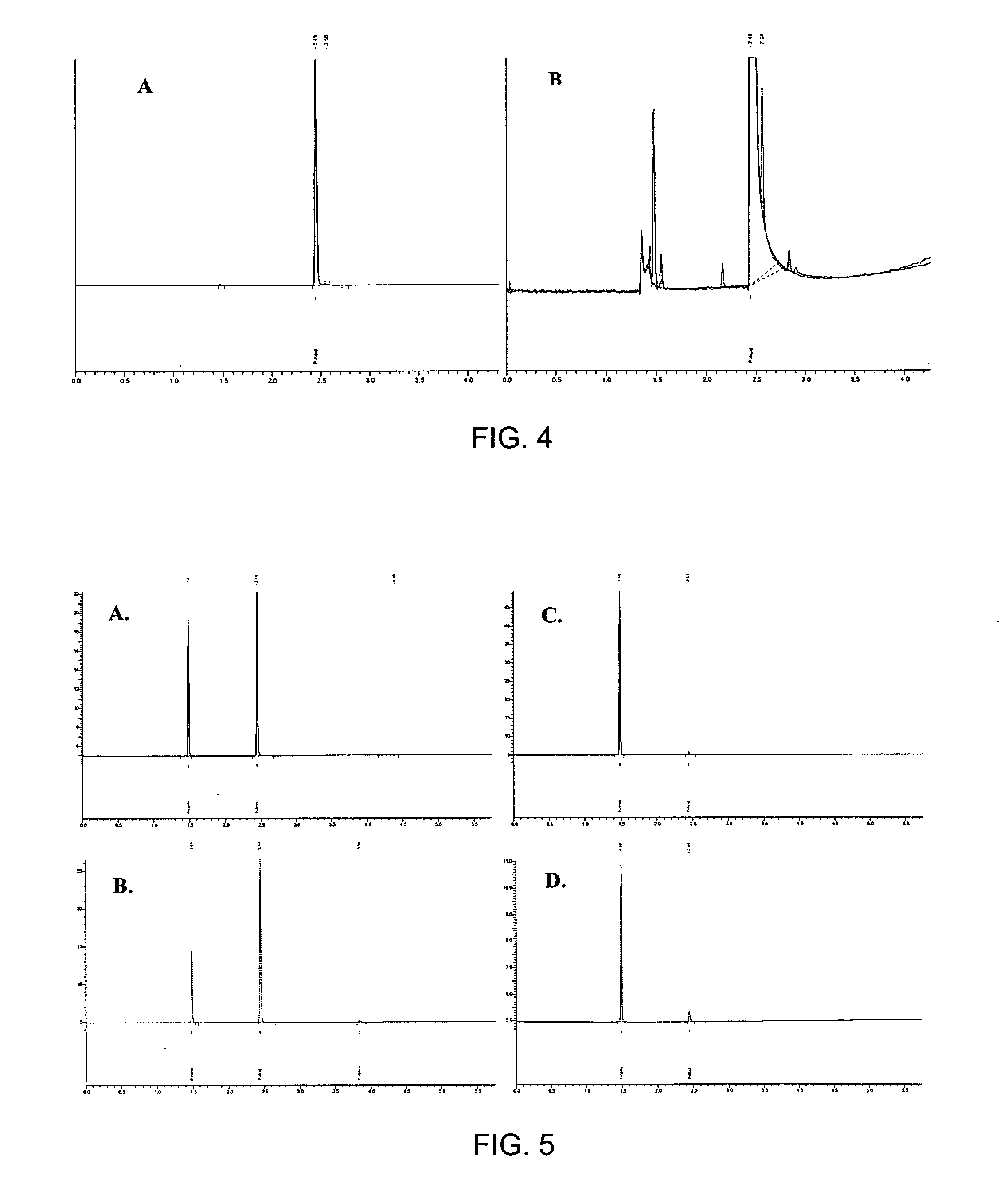Simultaneous recovery and continuous extraction of substantially pure carboxylic acids and ammonium salts from acid hydrolysis reaction mixtures
a technology of acid hydrolysis and ammonium salts, which is applied in the field of simultaneous recovery and continuous extraction of substantially pure carboxylic acids and ammonium salts from acid hydrolysis reaction mixtures, can solve problems such as commercially unfavorable, and achieve the effect of reducing the total reaction volume and high purity of propionic acid
- Summary
- Abstract
- Description
- Claims
- Application Information
AI Technical Summary
Benefits of technology
Problems solved by technology
Method used
Image
Examples
example 1
Hydrolosis of Propionitrile to Propionic Acid using Sulfuric Acid
[0020] Several strong acids have the potential to be considered for commercial use. Phosphoric, hydrochloric, nitric and sulfuric acids are readily available and should react with propionitrile (PN) to generated propionic acid (PA) and an ammonium salt. From cost estimates, it is apparent that the sulfuric acid reaction is cost-competitive with nitric acid and hydrochloric acid. In addition, it has several other advantages compared to other acids. Sulfuric can be obtained at higher practical maximum concentration (95%) than hydrochloric (36%) and nitric (65%). This is important in controlling the quantity of water remaining at the end of the reaction. If the majority of water is used up in the reaction, the salts can be more easily precipitated and conveniently recovered. A second consideration in selecting an acid is its ability to form the two-phase reaction mixture. A third important factor in selecting an acid is ...
example 2
Acid Hydrolosis of Propionitrile to Propionic Acid using Hydrochloric Acid Alone or Combined with Sulfuric Acid
[0045] Propionitrile (PN) can be hydrolyzed with sulfuric acid (H2SO4) in a biphasic reaction, allowing for the recovery of substantially pure propionic acid (PA) and concentrated ammonium bisulfate (NH4HSO4). Experiments were conducted to determine whether other strong acids could also be employed to convert PN to PA in a manner similar to H2SO4 hydrolysis. In addition to H2SO4, other readily available strong acids include hydrochloric (HCl) and nitric acid (HNO3).
[0046] This example focuses on HCl (pKa, −8) as an alternative to H2SO4 (pKa1, −3; pKa2, 2.0). The experimental results show that HCl rapidly catalyzes PN hydrolysis. In addition, HCl has the advantage of producing NH4Cl as the co-product, which can be utilized in a variety of applications without further reaction, unlike NH4HSO4 resulting from H2SO4 hydrolysis of PN. Furthermore, HCl is unlikely to undergo an ...
example 3
Upper and Lower Water Inclusion Limits in Sulfuric Acid Hydrolysis of Propionitrile for Easy Recovery of Propionic Acid
[0064] As described in previous examples, sulfuric acid (H2SO4) hydrolyzes propionitrile (PN) into propionic acid (PA) and a biphasic reaction was established. The upper phase of the final reaction mixture contained high purity PA and the lower phase was highly concentrated ammonium bisulfate (ABS). This biphasic separation should be amenable to an industrial process for the production of PA, and this requires the establishment of optimal reaction conditions to maximize reaction rate and recovery of PA, while maintaining low reactant costs.
[0065] Several optimization reactions were conducted to evaluate the effect of a range of reactant ratios on the hydrolysis of propionitrile by H2SO4. The first experiment evaluated the impact of water as well as sulfuric acid concentrations on reaction rate and extent using a 3×3 factorial design. The second experiment focused ...
PUM
| Property | Measurement | Unit |
|---|---|---|
| mole ratio | aaaaa | aaaaa |
| mole ratio | aaaaa | aaaaa |
| mole ratio | aaaaa | aaaaa |
Abstract
Description
Claims
Application Information
 Login to View More
Login to View More - R&D
- Intellectual Property
- Life Sciences
- Materials
- Tech Scout
- Unparalleled Data Quality
- Higher Quality Content
- 60% Fewer Hallucinations
Browse by: Latest US Patents, China's latest patents, Technical Efficacy Thesaurus, Application Domain, Technology Topic, Popular Technical Reports.
© 2025 PatSnap. All rights reserved.Legal|Privacy policy|Modern Slavery Act Transparency Statement|Sitemap|About US| Contact US: help@patsnap.com



